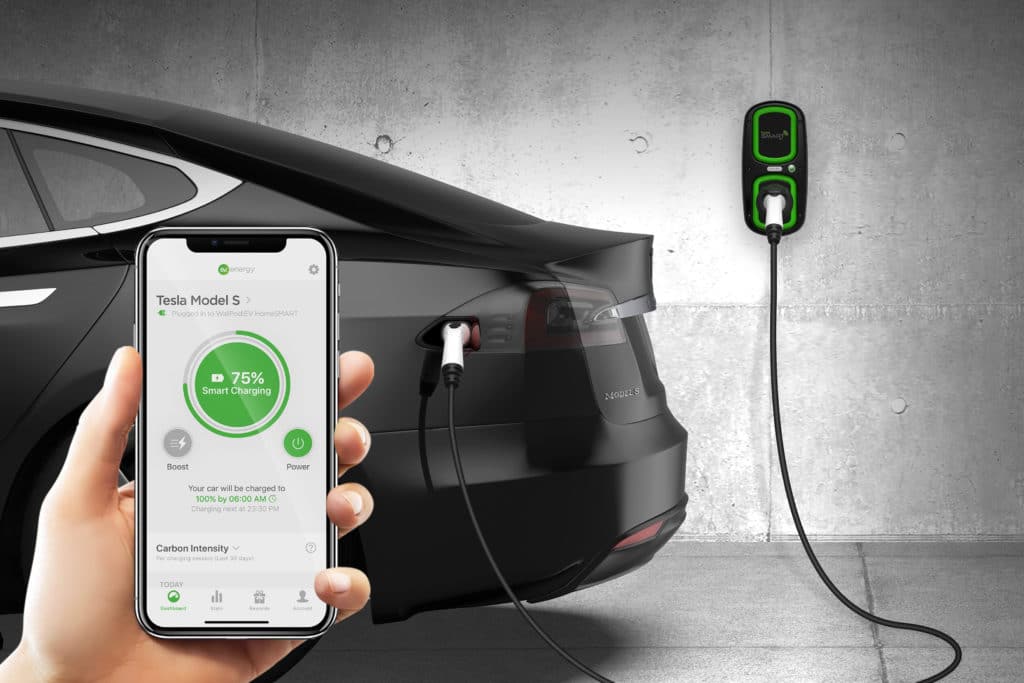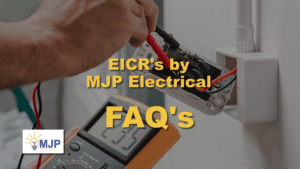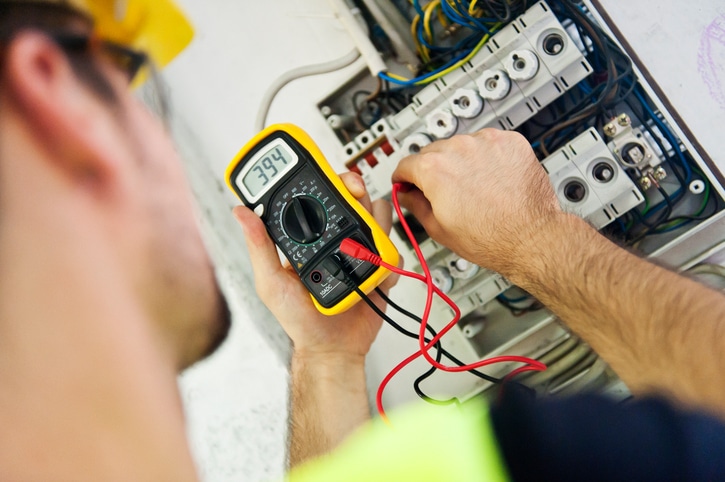If there are still questions plaguing you about EV charging, we’ve got you covered with our EV charging FAQs. If you can’t find what you’re looking for, we are always on hand to talk to you regarding your questions, so don’t hesitate to get in touch.
When you have an EV charger installed at home, you may not pay the same price as the next customer. This isn’t because certain customers get special deals but is down to the unique needs of each person. Things like the length of the cable, the type of charger you require and where the cable needs to be installed could affect the price. Furthermore, if you need any additional equipment such as a protective earth rod, this could incur an additional fee.
At MJP electrical, we like to take a no-nonsense approach to all of our quotes, allowing clients to easily access the services they need. As such, getting an EV charger installed is quick and easy; simple click on our ‘Book Online’ or ‘Get a Quote’ links and get started today.
Most EV owners will be eligible for the OLEV grant. However, there are a few criteria that you must meet:
- Your vehicle must be OLEV eligible. The list of eligible vehicles can be found on the official government list.
- Your charger must also be OLEV approved. There is an official government guidance on this which can be found here.
- Your property must have off-road, private parking so that the cable does not have to cross a public walkway.
The installer must be OLEV approved.
An electric vehicle does come with a higher initial investment. However, it is important to keep in mind that over time, the cost of running the vehicle is much lower.
The average cost of a brand new electric car is around £20,000. However, there are finance and PCP options available for many of these vehicles, making them more accessible to those who cannot purchase one upfront. Furthermore, there is government help available up to £3,500 for those that are eligible.
The length of time that it takes to charge an electric vehicle will vary vastly depending on the model and the type of charger you are using. However, as a general rule, you can expect it to take between five and ten hours, on average, to obtain a full charge.
One of the major concerns for many homeowners is that charging their car at home will see their energy bills skyrocket. While you will notice a slight increase in your energy consumption, when you compare this to the cost of charging your vehicle at a ‘pay per use’ public station, the difference is significant.
Getting to grips with the EV charger jargon can feel a little overwhelming, but understanding it isn’t as scary as you may think. A type 1 charger has a five pin connector whereas a type 2 charger has a seven pin plug. The type of car you have will determine which type you need but as a rule, most of the American and European car manufacturers use a type 2 charger whereas Asian manufacturers typically use type 1. That being said, type 2 is becoming more and more popular.
You will often see chargers being described as tethered or untethered; there is one key difference between these. A tethered charger has a fixed cable that stays with the charging point and can be shared between all car owners.
Conversely, an untethered charger doesn’t have a cable attached and relies on each car owner plugging in their own cables to charge.
It seems that everything is becoming ‘smart’ in the modern world, but what that means will vary from product to product. In the case of the EV charger, being smart simply means that they are able to be operated remotely. Some may be capable of charging during off-peak times to reduce energy costs. The government has an initiative to ensure that all future EV chargers are smart.
Much like any other type of battery, your EV battery does have a certain lifespan. This will depend on the manufacturer, but most are guaranteeing their batteries for at least 100,000 miles, although there are some, like those from Tesla which are designed for high mileage users.
Once installed, you will find that your charger serves you well and it is unlikely that there will be too many problems. However, if there are any issues, the various parts of the charger are simple to replace and won’t require a lot of disruption.
Furthermore, if you own a smart charger, much of the maintenance can be performed remotely, so you won’t ever be left waiting.
Most chargers will require you to pay a fee, although there are some that are free to use if you are a paying customer at the business where the charger is installed. There are also some charging points that require an RFID card. In any case, you will likely be required to supply your details before you can use the charger.
At the time of writing, there are more than 35,000 EV chargers in the UK. However, this number is steadily increasing and it is thought that as many as 300 new charging stations are being installed every month.
You probably aren’t going to want the world and his wife plugging into your charger and using your energy. However, there are EV drivers who would be audacious enough to try and use another driver’s home charger. That being said, most modern EV chargers for the home now come with a lock feature that only you can access. This can be done with an app, facial recognition or a lock box.
If you are using your vehicle every day and draining the battery, you will probably be like most drivers and charge your EV overnight, ready for the next morning. However, this isn’t necessary if the battery doesn’t need charging. If you haven’t charged your car overnight, you won’t need to worry that it will suddenly cut out while you’re on the road. Manufacturers tend to make their batteries to a very high standard and they will hold their charge for a few days.
When you are using a rapid charger, you may wish to remain in your car. Since this method of charging uses a DC method, it will not create an electromagnetic field and it is perfectly safe to stay in the car. However, when using AC charging, an EMF can be created. Most manufacturers state in their user manuals that sitting in a charging car if you have a pacemaker is not advisable.
It is a good idea to give your car a full charge every now and again, but in the main, you don’t need to worry about charging it to 100% at every charge. Keeping the battery between 20-80% is usually going to be enough to meet your driving needs.
If you have charged your battery and find that you don’t actually need to go anywhere, you can leave your electric vehicle for as long as you need. However, you should bear in mind that the charge will drain over time, although this is likely to be at a rate of just a few percent a month. If you are leaving your car for a long time without driving it, you should avoid leaving it at 100% or 0% as these extremes may have a damaging effect on the battery.
We would always recommend charging your electric car any time that it dips below 20-30%. However, there may be times when it is unavoidable that you hit 0% or close to it. Doing this on rare occasions likely won’t have a devastating result but regularly draining the battery can be detrimental to its health.
If your charge does run out in the middle of a journey, your car will stop working. The best way to get to a charging station is for an emergency breakdown service to provide you with a flatbed. Using a traditional tow rope can cause damage to the traction motors.
Imagine the convenience of being able to charge your car whilst on the move; well, in reality, this is technically possible. There are many manufacturers that design their cars to recoup energy as they are moving. However, this is minimal but in the future, it is likely that dynamic charging may become commonplace.
Conclusion
Electric vehicles are our future and something that we must all begin to understand. Even if you aren’t currently considering purchasing an EV, there will come a time in the coming years that you will have to. If you’re someone who has already jumped on the electric car bandwagon then you’re probably wondering what is the best way to charge your car.
Installing an EV charger at home gives you a convenient way to boost your battery without having to find a public charger, which can be a huge hassle. What’s more, installing this type of equipment is quick, easy and, thanks to the government grant, very affordable. We’d be more than happy to talk through any of your concerns or questions, so don’t hesitate to get in contact with us to discuss your options.
Electric Car Charging Points
MJP Electrical can now fit home charging stations for your all-electric or plug-in hybrid car at your home. What does this mean to you?
- More convenient
- Future proofed
- Faster charging
- Expert installation
- 3 Year OLEV enabled Charging Point Manufacturer warranty
- Government grant towards the cost












